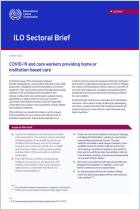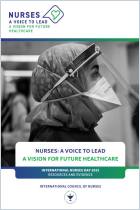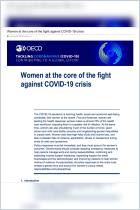An informative report from the International Labour Organization outlines COVID-19’s impact on health workers and health systems around the world. Published in April 2020, the report indicates how countries responded in the early months of the pandemic. The issues it raises – of occupational safety and health, workers’ mental health, working hours, gender disparities, workforce shortages, and financial impacts – remain relevant and largely unresolved.
The COVID-19 pandemic has placed heavy demands on health workers, and they need support.
Every health system depends on its health workers, and in turn these workers need protection so they can continue to work. They need labor rights and decent working conditions. Although little data exist about rates of COVID-19 cases among health workers, they experience a high rate of infection – in Italy in April 2020, for example, the infection rate among health workers exceeded 10%. To reduce their risk of occupational respiratory infection, health workers need information about how the disease transmits, personal protective equipment, training in how to use it, and further measures to control infection, such as droplet precautions.
To cope with the emotional demands of working in hospitals during a pandemic crisis – which may include fear, anxiety, exposure to discrimination and stigma, and separation from their families – health workers need information about how to deal with stress and, in some cases, counseling. They also need working time arrangements that support their well-being.
Short-term health workers, including volunteers, need the same protections.



















Comment on this summary